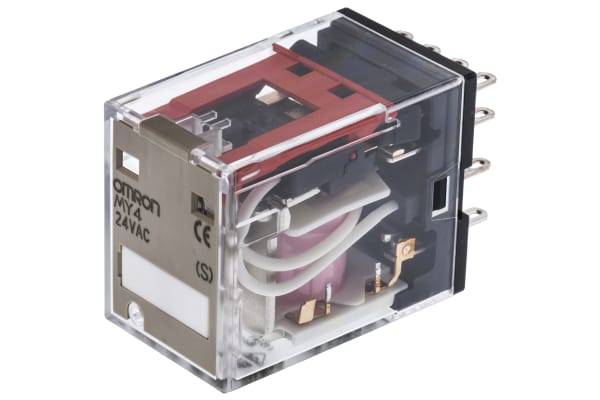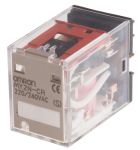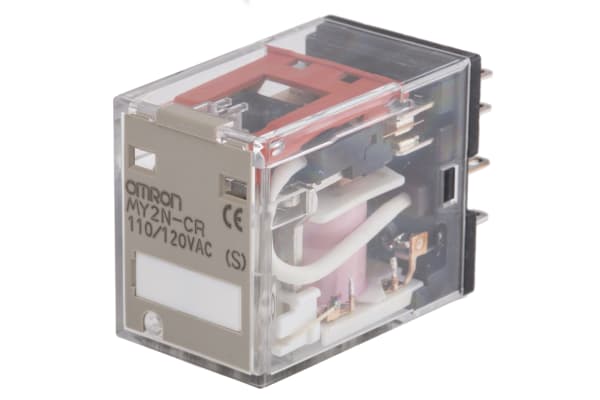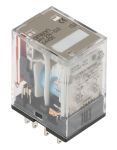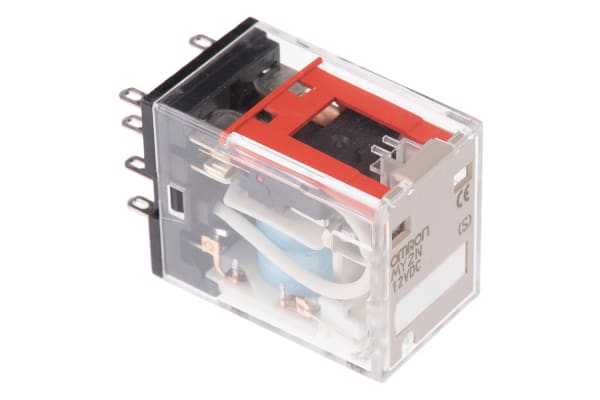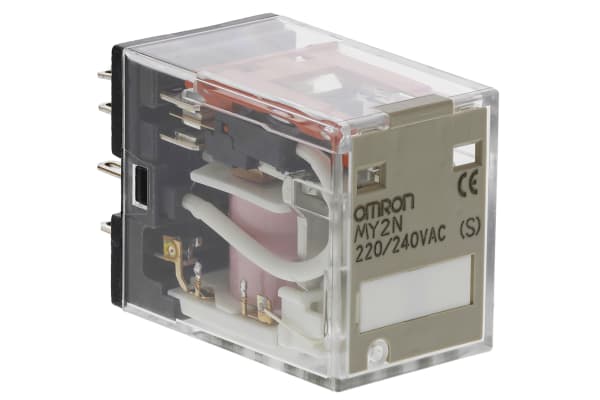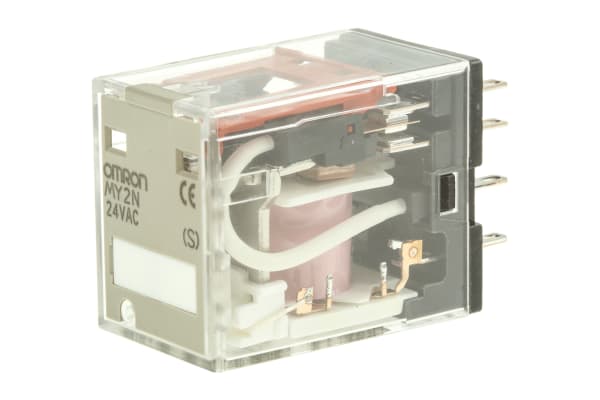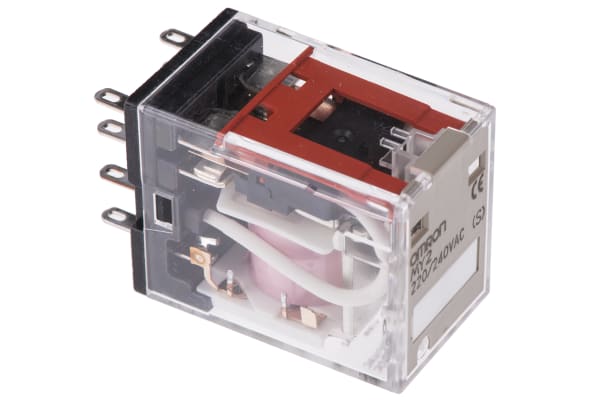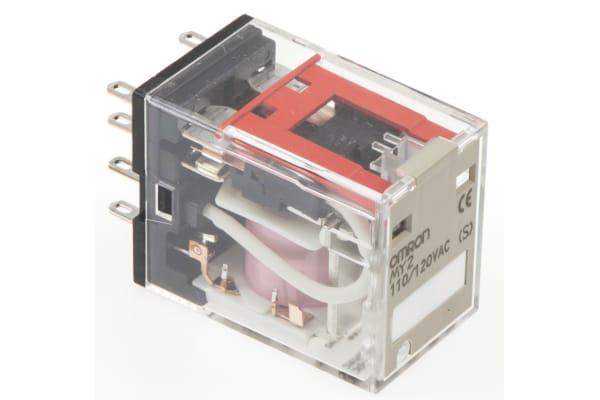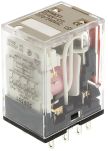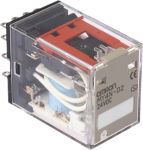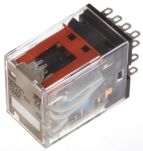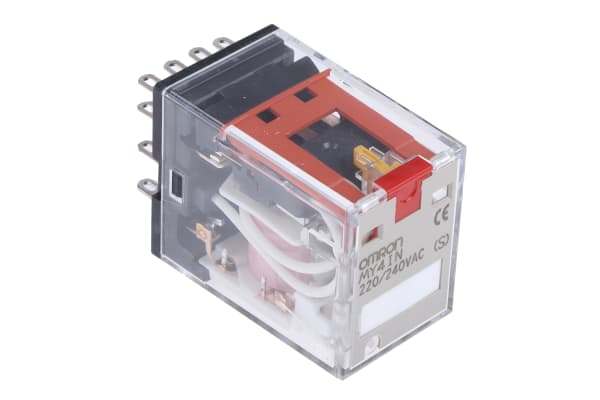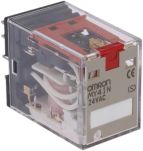Non-Latching Relays
Relays are electrical switches that are operated by electrical impulses with the primary function to open and close a circuit, they can also be referred to as industrial switches. There are 2 main types available, latching and non–latching relays.How do non-latching relays work?Non-latching relays are in a normally closed (NC) position and will stay in this state without power. When power passes through the circuit, the relay switched to a normally open (NO) position by using an internal coil to generate a magnetic force, holding this NO position. Once the current is turned off, it returns to the NC position. This makes non-latching relays well suited to push-button applications like keyboards and micro-controller input buttons.What are non-latching relays used for?Non-latching relays are highly durable and versatile components, making their performance long lasting and suitable for use in a wide range of applications, such as:Automotive enginesHousehold appliancesIndustrial machineryMedical equipmentTelecommunications equipmentWhat is the difference between latching and non-latching relays?Both types of relays in similar in design and function, however, a significant difference between them is that a latching relay will remain in the last position it when it was last powered, whereas a non-latching goes back to its normal position. This makes each more type of relay suitable for different applications. Considerations when selecting a relayWhen choosing a relay, it is important to consider a number of specifications to ensure it is fit for purpose, some factors include:Coil voltage – the required voltage to actuate the switching mechanism. If a voltage is too high this could damage the components, if it is too low then it will not actuate. Contact configuration – This is the state the contacts are in without power. For example SPST, single pole single throw.Contact material – the relay contacts are available in many materials that have certain properties. Common materials are gold, silver, tin oxide and nickel Coil power – the amount of power (watts) the coil operates at. This must match the power in the circuit for correct function. Coil resistance – the amount of resistance (ohms) in the circuit that the coil creates.
-
Omron, 24V ac Coil Non-Latching Relay DPDT, 10A Switching Current Plug In, 2 Pole, MY2 24AC (S)
IDR144,748.20 -
Omron, 24V dc Coil Non-Latching Relay 4PDT, 3A Switching Current Plug In, 4 Pole, MY4 24DC (S)
IDR245,652.38 -
Omron, 12V dc Coil Non-Latching Relay 4PDT, 5A Switching Current Plug In, 4 Pole, MY4 12DC(S)
IDR181,249.92 -
Omron, 24V ac Coil Non-Latching Relay 4PDT, 5A Switching Current Plug In, 4 Pole, MY4 24AC (S)
IDR129,748.93 -
Omron, 240V ac Coil Non-Latching Relay DPDT, 10A Switching Current Plug In, 2 Pole, MY2N-CR AC220/240(S)
IDR167,824.00 -
Omron, 120V ac Coil Non-Latching Relay DPDT, 10A Switching Current Plug In, 2 Pole, MY2N-CR AC110/120(S)
IDR391,554.37 -
Omron, 24V dc Coil Non-Latching Relay DPDT, 10A Switching Current Plug In, 2 Pole, MY2N-D2 24DC(S)
IDR132,161.40 -
Omron, 12V dc Coil Non-Latching Relay DPDT, 10A Switching Current Plug In, 2 Pole, MY2N-D2 12DC(S)
IDR223,730.37 -
Omron, 24V dc Coil Non-Latching Relay DPDT, 10A Switching Current Plug In, 2 Pole, MY2N 24DC(S)
IDR253,833.80 -
Omron, 12V dc Coil Non-Latching Relay DPDT, 10A Switching Current Plug In, 2 Pole, MY2N 12DC(S)
IDR205,374.62 -
Omron, 240V ac Coil Non-Latching Relay DPDT, 10A Switching Current Plug In, 2 Pole, MY2N AC220/240(S)
IDR139,293.92 -
Omron, 120V ac Coil Non-Latching Relay DPDT, 10A Switching Current Plug In, 2 Pole, MY2N AC110/120(S)
IDR157,125.22 -
Omron, 24V ac Coil Non-Latching Relay DPDT, 10A Switching Current Plug In, 2 Pole, MY2N24ACS
IDR151,670.94 -
Omron, 240V ac Coil Non-Latching Relay DPDT, 10A Switching Current Plug In, 2 Pole, MY2 AC220/240(S)
IDR165,201.75 -
Omron, 120V ac Coil Non-Latching Relay DPDT, 10A Switching Current Plug In, 2 Pole, MY2 AC110/120(S)
IDR160,271.92 -
Omron, 240V ac Coil Non-Latching Relay 4PDT, 5A Switching Current Plug In, 4 Pole, MY4NCRAC220240S
IDR217,122.30 -
Omron, 120V ac Coil Non-Latching Relay 4PDT, 5A Switching Current Plug In, 4 Pole, MY4N-CR 110/120AC(S)
IDR360,926.49 -
Omron, 24V dc Coil Non-Latching Relay 4PDT, 5A Switching Current Plug In, 4 Pole, MY4N-D2 24DC(S)
IDR336,906.68 -
Omron, 12V dc Coil Non-Latching Relay 4PDT, 5A Switching Current Plug In, 4 Pole, MY4N-D2 12DC(S)
IDR346,766.34 -
Omron, 24V dc Coil Non-Latching Relay 4PDT, 5A Switching Current Plug In, 4 Pole, MY4IN 24DC (S)
IDR147,894.90 -
Omron, 12V dc Coil Non-Latching Relay 4PDT, 5A Switching Current Plug In, 4 Pole, MY4IN 12DC(S)
IDR230,548.22 -
Omron, 240V ac Coil Non-Latching Relay 4PDT, 5A Switching Current Plug In, 4 Pole, MY4IN AC220/240(S)
IDR254,358.25 -
Omron, 120V ac Coil Non-Latching Relay 4PDT, 5A Switching Current Plug In, 4 Pole, MY4IN AC110/120(S)
IDR197,402.98 -
Omron, 24V ac Coil Non-Latching Relay 4PDT, 5A Switching Current Plug In, 4 Pole, MY4IN 24AC (S)
IDR281,105.20






